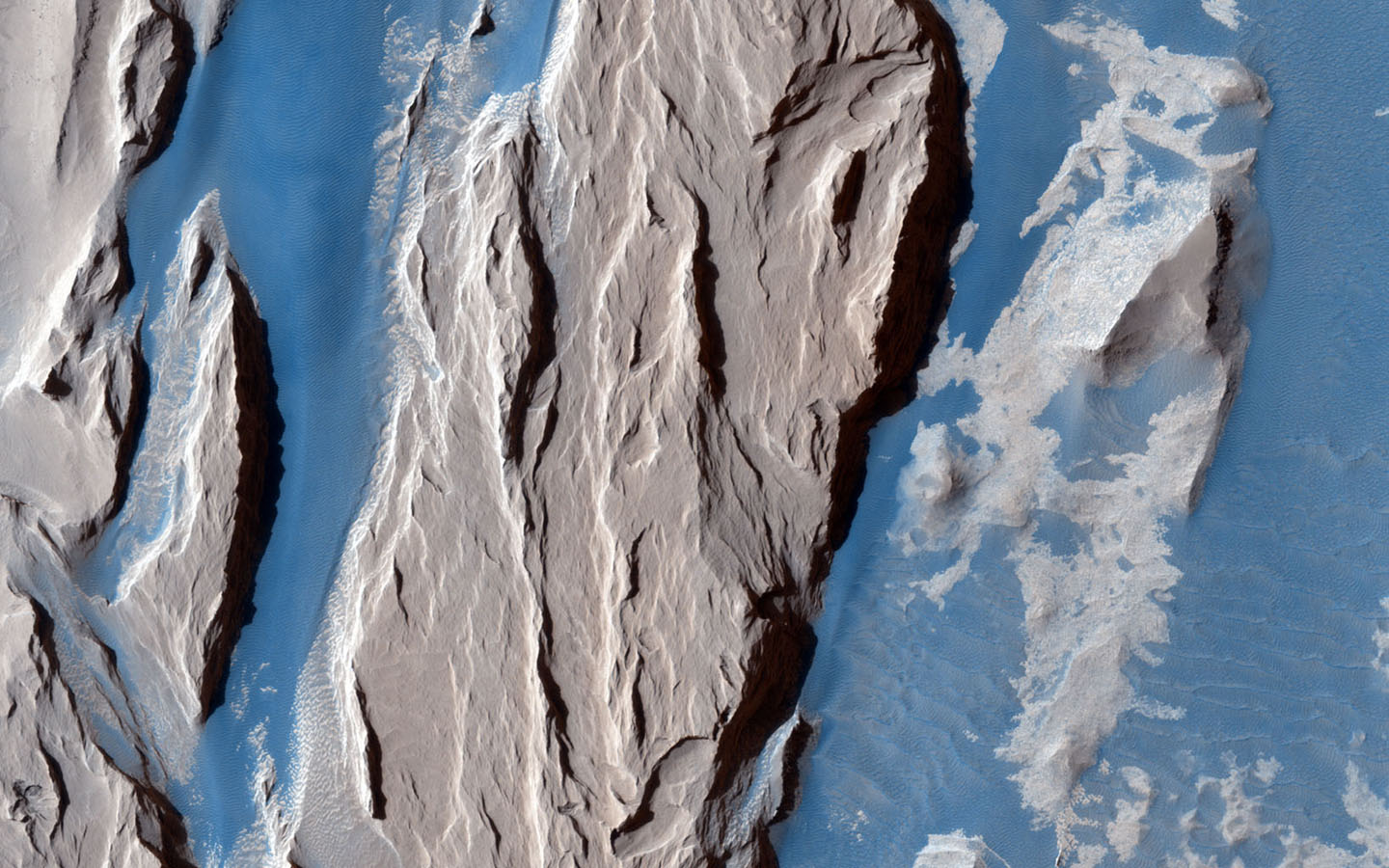Scientists Identify Source of Mars Dust Currently Threatening Rover

The Opportunity rover on Mars is trying to survive a massive dust storm that could put the craft out of operation — but where does all the dust in that storm come from?
Researchers now think they have identified the main source of Martian dust bunnies: a giant volcanic gash across the planet's surface called the Medusae Fossae, according to a new study.
"Mars wouldn't be nearly this dusty if it wasn't for this one enormous deposit that is gradually eroding over time and polluting the planet, essentially," study co-author Kevin Lewis, a planetary geophysicist at Johns Hopkins University, said in a statement. [Thick Dust Clouds Spotted Near Martian Ice Cap]
And it's quite a lot of pollution. Scientists have calculated that about 3 million tons (3 trillion kilograms) of dust moves between the surface and atmosphere of Mars each year. That makes the phenomenon a crucially important characteristic of the Red Planet's surface.
The sheer volume of dust encouraged scientists to track down the material's source. First, the scientists looked at the chemical fingerprint of dust analyzed at a variety of sites around the planet. Weirdly, that fingerprint looks much the same no matter where the sample comes from, with a very specific balance of chlorine and sulfur.
So, the team behind the new research went looking for that same ratio in different rocks of Mars itself. Of the regions the scientists looked at, the best match for the dust came from Medusae Fossae, a giant gash near the Martian equator that scientists think was originally created by volcanic activity. The region stretches across almost 620 miles (1,000 kilometers), according to NASA.
Previous researchers had suggested that volcanic activity produced the formation about 3 billion years ago and that the ridge-like shapes on its surface come from wind eating away at the surface.
Get the Space.com Newsletter
Breaking space news, the latest updates on rocket launches, skywatching events and more!
The research team estimated the amount of dust that such a process would produce, given how large they believe Medusae Fossae was at the beginning — about half the size of the continental U.S., according to previous research.
That calculation suggests that the formation has lost enough dust to coat the planet in a layer from 6.5 to 40 feet (2 to 12 meters) deep. And that estimate matches pretty well with how much dust scientists see on the planet: about 10 feet (3 m), based on measurements of the poles and a few particularly dusty regions, the team wrote.
The new research won't help Opportunity endure the dust storm threatening the rover's solar-power supply, but the finding does explain a hugely prominent characteristic of the Red Planet.
The research is described in a paper published July 20 in the journal Nature Communications.
Email Meghan Bartels at mbartels@space.com or follow her @meghanbartels. Follow us @Spacedotcom, Facebook and Google+. Original article on Space.com.
Join our Space Forums to keep talking space on the latest missions, night sky and more! And if you have a news tip, correction or comment, let us know at: community@space.com.

Meghan is a senior writer at Space.com and has more than five years' experience as a science journalist based in New York City. She joined Space.com in July 2018, with previous writing published in outlets including Newsweek and Audubon. Meghan earned an MA in science journalism from New York University and a BA in classics from Georgetown University, and in her free time she enjoys reading and visiting museums. Follow her on Twitter at @meghanbartels.









